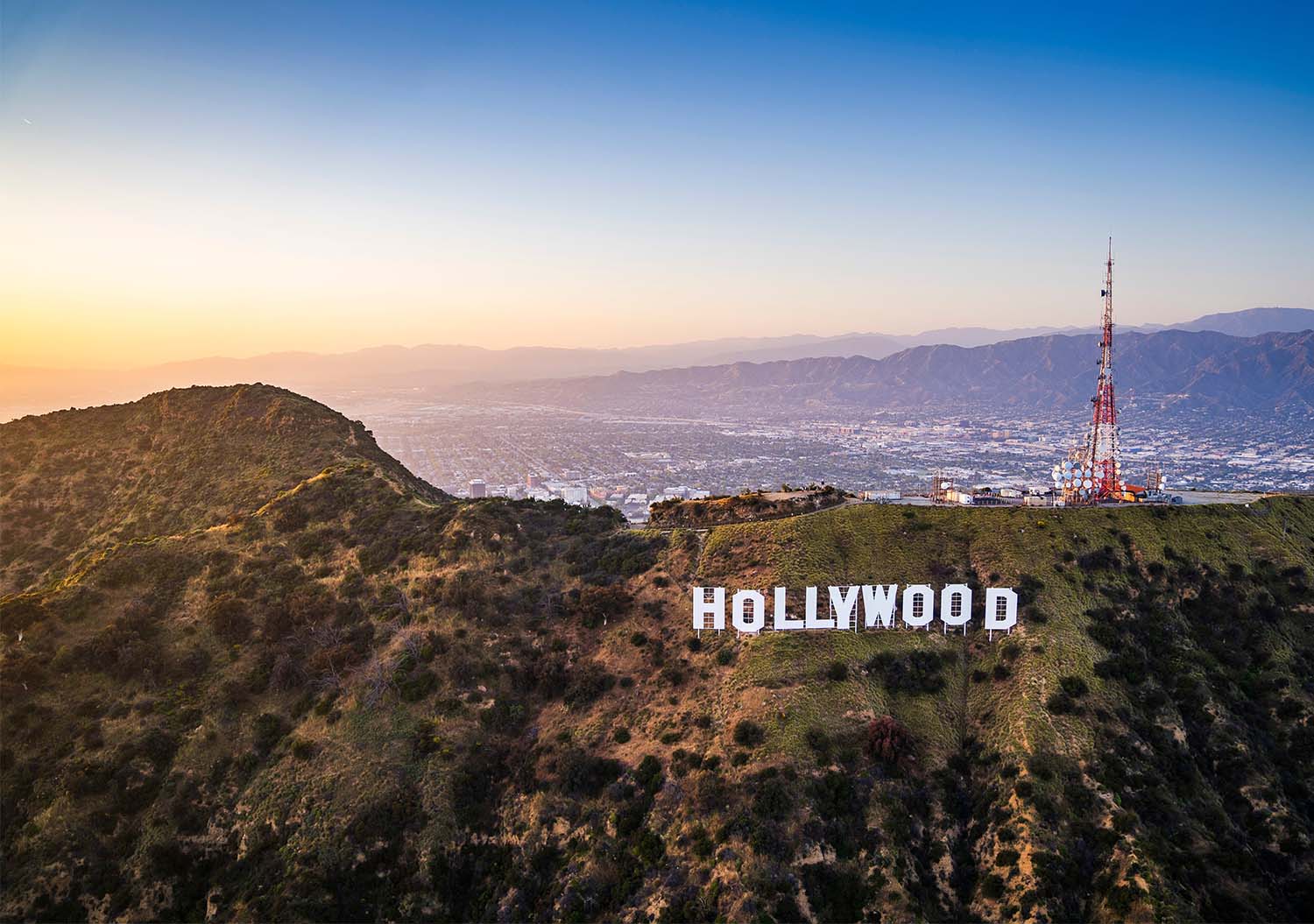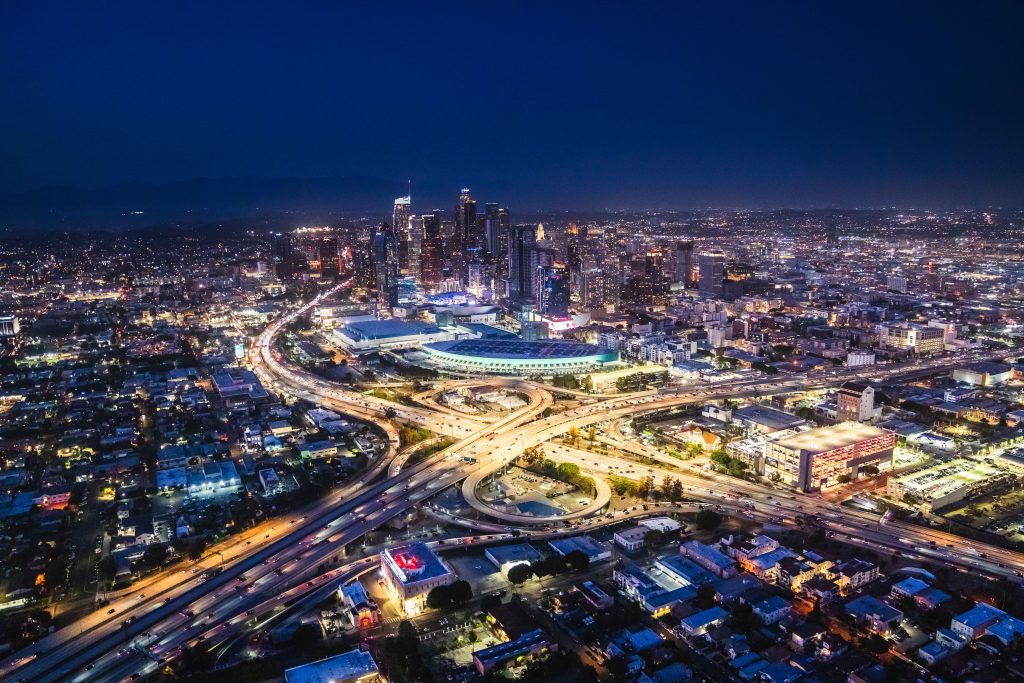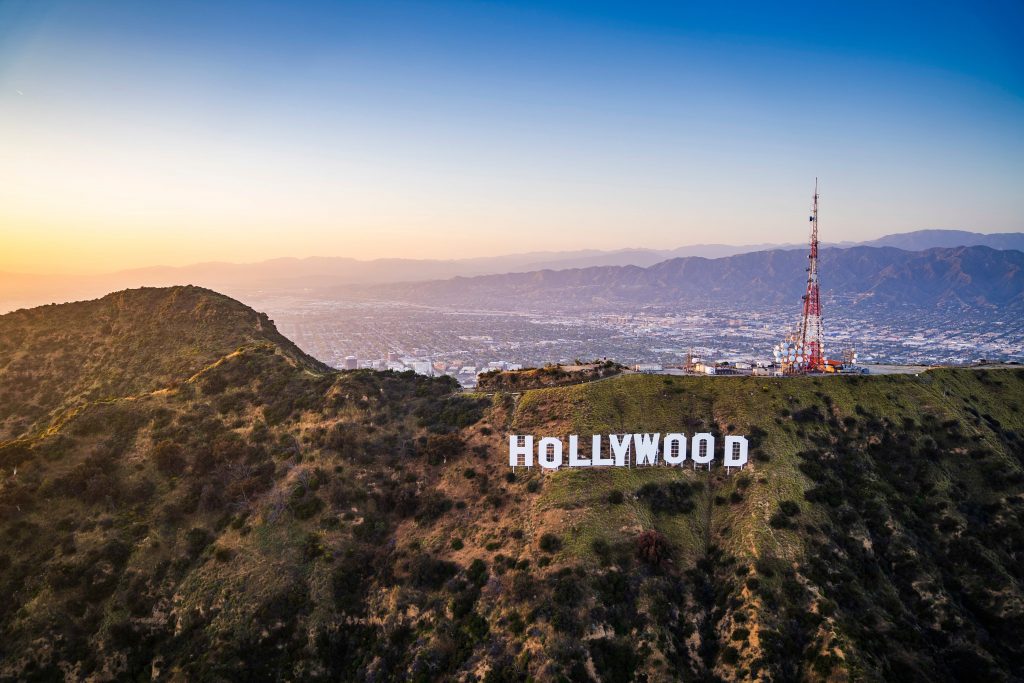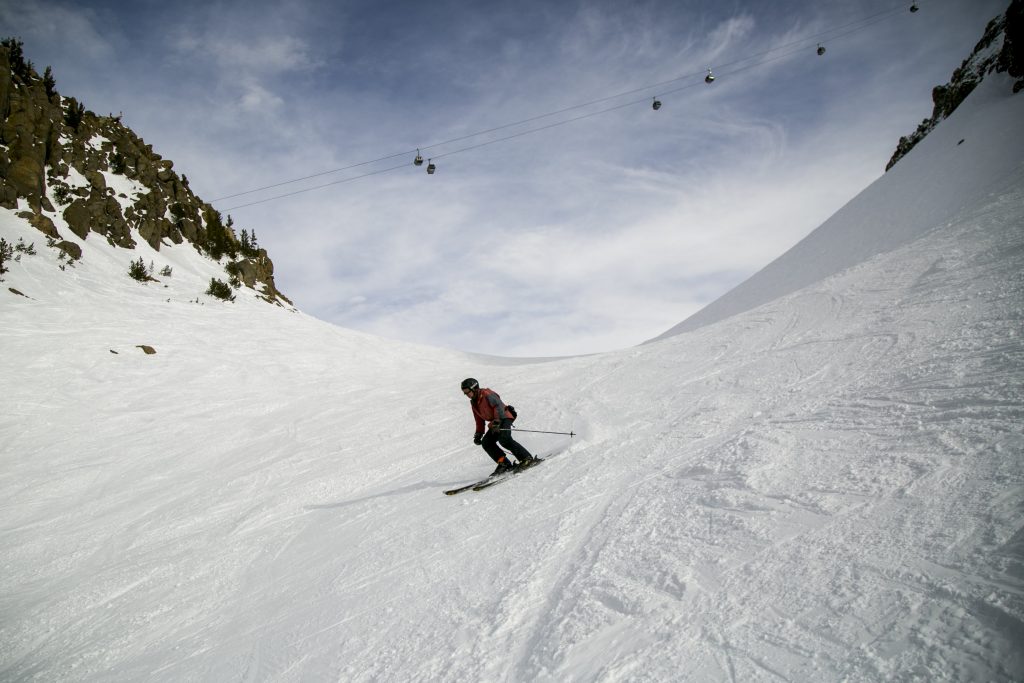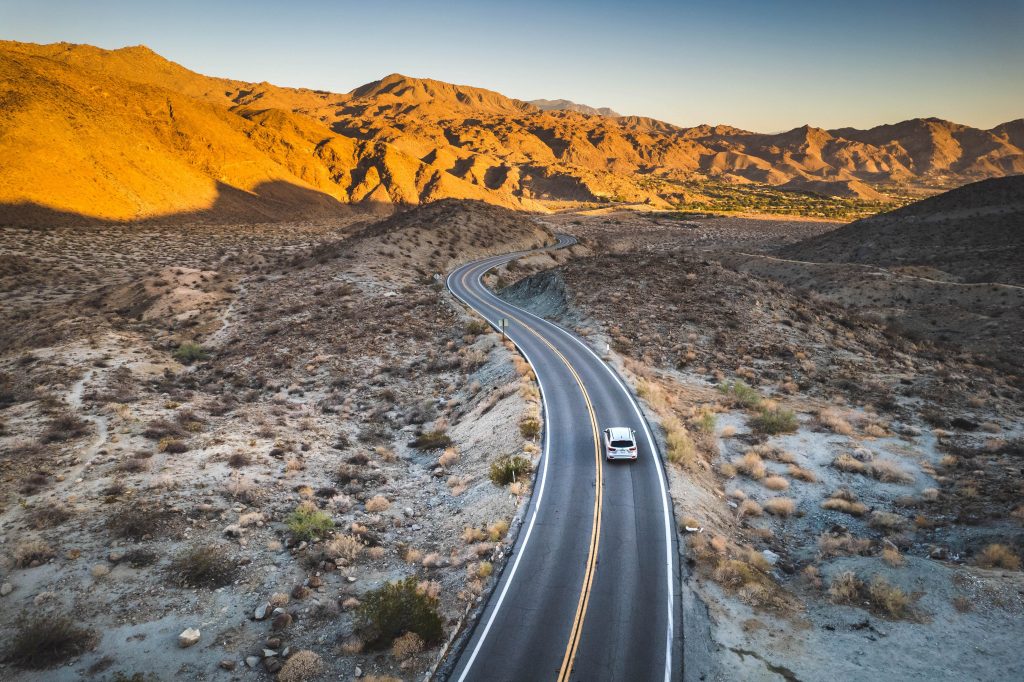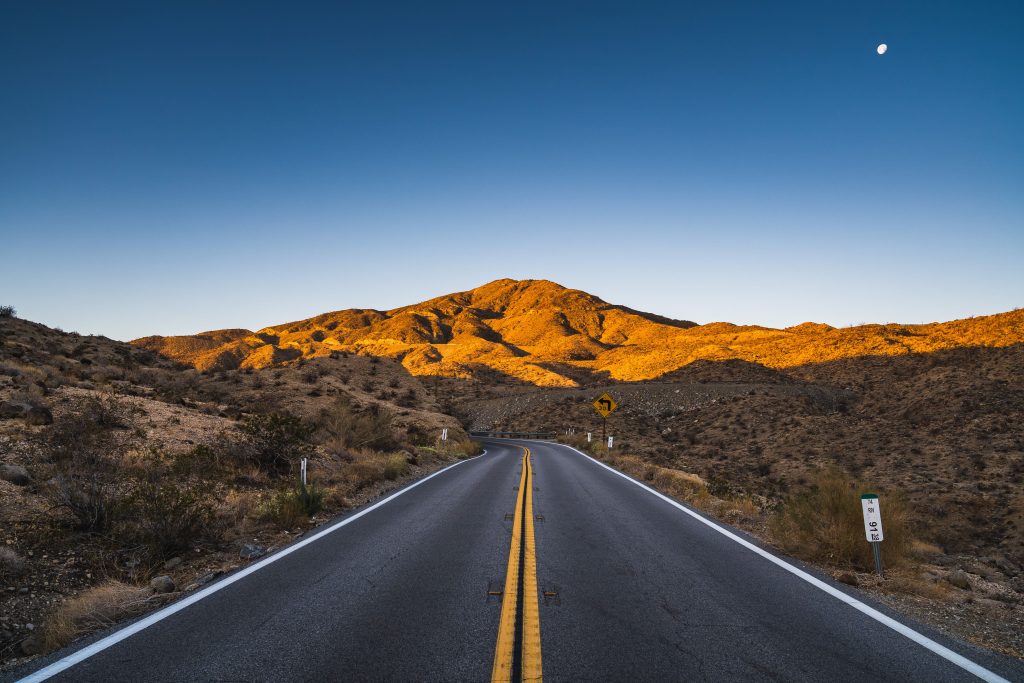The chances are positive that your favourite Hollywood cinematic moments were shot in California –
Indiana Jones, Iron Man, La La Land, and Mission Impossible III to name a few. Relive your favourite
film memory with a road trip across California that begins in Los Angeles and ends in Mammoth
Lakes taking you through diverse landscapes from deserts to mountains, cities to national parks, and
more across eight stops spanning 591 miles over a 3-to-5-day itinerary.
Stop 1- Griffith Observatory, Los Angeles
Set on Los Angeles’ Mount Hollywood 1,134 feet above sea level, Griffith Observatory and its
surrounding green space were created from a donation by Griffith J. Griffith, who dreamed of giving
his adopted hometown a world-class park and a facility where citizens could marvel at the stars.
Since opening in 1935, the iconic domed buildings have hosted knife fights in Rebel Without a Cause
and the first appearance of a muscle-bound future governor in The Terminator. Take in a show at
the Samuel Oschin Planetarium to gain a deeper understanding of cosmic happenings from the Big
Bang to the northern lights. Visit after dark to explore space through the Zeiss telescope or examine
The sun during the day with the state-of-the-art coelostat.
Stop 2- Angels Flight, Los Angeles
This 117-year-old railway, which claims to be the world’s shortest, ferries riders 300 feet up Bunker
Hill for $1 each way. Connecting Hill and Olive Streets, the classic orange and black cars of Angels
Flight were initially constructed for using both as a unique attraction and a way for residents to get
up one of L.A.’s steepest climbs. You might recognize the historic funicular from La La Land; it is
where Emma Stone and Ryan Gosling shared a memorable kiss. At the top, visit the Water Court
mall, and down below, duck into the massive food hall at Grand Central Market where Mia and
Sebastian spent a date night on the stools of Sarita’s Pupuseria. Visit the California Welcome Center –
Los Angeles near downtown to local staff about what to eat, and where to explore next.
Stop 3- Palm Springs Movie Locations
Thanks to easy access from Los Angeles, the desert oasis of Greater Palm Springs has long served as
one of Hollywood’s favourite filming spots. Drive to the city from the west and you can’t miss the
massive wind farm in the San Gorgonio Mountain Pass where Ethan Hunt dodged spinning turbines
while hanging from a helicopter in Mission: Impossible III. In the heart of the city, step inside the
Palm Springs Convention Center to see where Bradley Cooper played a gig in A Star Is Born. Get a
360-degree view of the Coachella Valley from the Palm Springs Aerial Tramway, featured in Skyway
to Death and Hanging by a Thread. Book a room at Casa de Monte Vista for a taste of Liberace’s
fabulous lifestyle; the resort served as his fictional home in Behind the Candelabra.
Stop 4- Pioneertown
In the high desert about 20 minutes from Joshua Tree National Park, Pioneertown looks like it has
been around since the 1800s. However, these rustic structures were originally built as a tourist
attraction and film set in 1946. You can stay in western-style rooms decorated with Native American
blankets, cactus, and rustic furnishings at the Pioneertown Motel or catch dinner and live music at
Pappy & Harriet’s, where Sir Paul McCartney once played a show. To talk to locals about more things
to do nearby, visit the California Welcome Center – Yucca Valley, which is only a 10-minute drive
away up Pioneertown Rd.
Stop 5- Death Valley National Park
Death Valley National Park encompasses mountain-size sand dunes, below-sea-level salt flats, and
colourful wildflowers and sandstone canyons. The park is the hottest and driest place in America,
with summer temperatures peaking above 120 degrees, and average rainfall of two inches per year.
Also extreme are the park’s elevations: Badwater Basin, the park’s lowest spot, rests at 282 feet
below sea level while Telescope Peak soars to 11,049 feet. You do not want to miss Mesquite Flat
Sand Dunes when the early morning light accents the dunes’ many contours and ripples. Another
must-see stop is Zabriskie Point and Golden Canyon, where every imaginable shade of gold is visible
in the wrinkled cliffs, whose layers glow at sunrise and sunset. Pick your favourite perspective- drive
to Zabriskie Point and survey the scene from on high, or see the vibrant beauty up close by hiking in
Golden Canyon. Spring season is the best time to spot rare wildflowers in the park.
Stop 6- Museum of Western Film History, Lone Pine
The stark and lovely terrain surrounding Lone Pine, sandwiched by Sequoia National Park to the west
and Death Valley to the east, has served as the backdrop for more than 400 feature films. At the
Museum of Western Film History, guests can view memorabilia from movies shot in the nearby
wilds: Samson and Delilah, Gunga Din, and Django Unchained to name a few. Old-fashioned cars,
pianos, saddles, and original scripts create a rich understanding of “where real West became the reel
West,” according to museum officials. Grab a film-set map to embark on a self-guided tour of Movie
Road, which twists through the Alabama Hills, a rugged landscape of rock formations backed by the
snow-capped Sierra Mountains.
Stop 7- Lone Ranger Canyon, Lone Pine
The most famous stop on Movie Road, the geologically impressive route that marks the spot of
famous filming locations, Lone Ranger Canyon has been featured as the backdrop for many a box
office blitz. Located in the Alabama Hills in Lone Pine, the site can be accessed by car with just a
short drive on dirt. The otherworldly rock formations have been used as a stand-in for spots all
across the globe. It is the site of the ambush that brought Tonto and Ranger Reid together in The
Lone Ranger; stood in for Afghanistan in Iron Man; and emulated the Spanish countryside Russell
Crowe galloped through in Gladiator.
Stop 8- Mammoth Mountain in the Movies
Mammoth Lakes is a lovely and laid-back ski town with the 11,000-foot-tall Mammoth Mountain as
its namesake peak. Take to the slopes during the extended season with more than 30 feet of average
annual snowfall, the resort has been known to stay open through early summer. In late spring,
Mammoth’s lower-elevation trails transform into a mountain biker’s paradise with runs through
forested paths. The impressive snowy summit stood in for the Himalayas in Indiana Jones and the
Temple of Doom. After ditching their plane, Indy and co. made an improbable descent in an
inflatable life raft. There aren’t any white water rafting opportunities in Mammoth, but
opportunities for activities like fly-fishing and hot spring soaking abound. Stop by the California
Welcome Center – Mammoth Lakes to ask the local staff about more ways to make the most of your
visit here.


